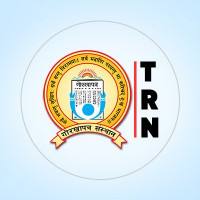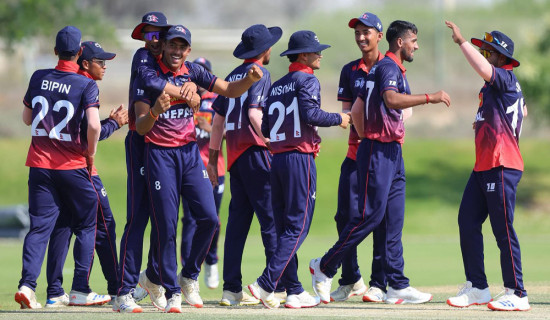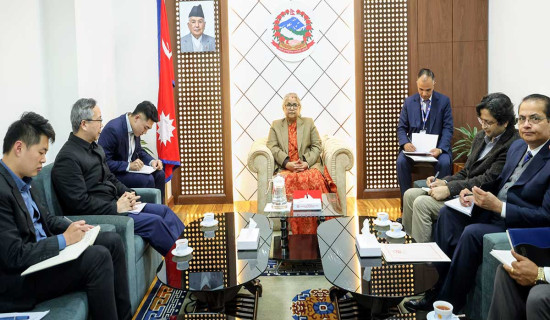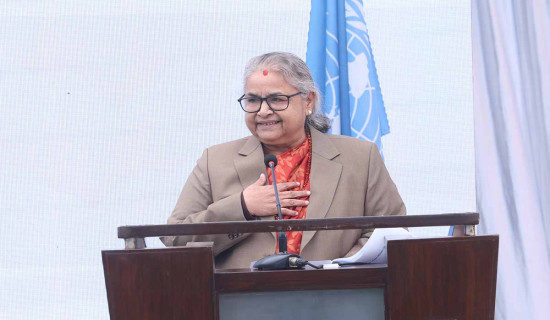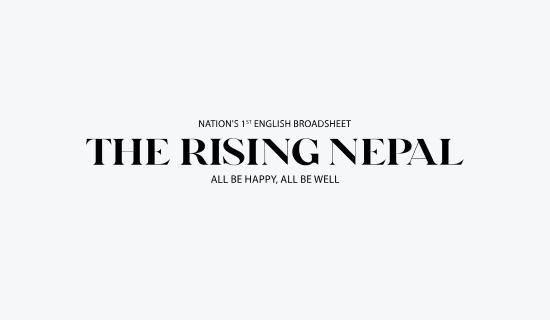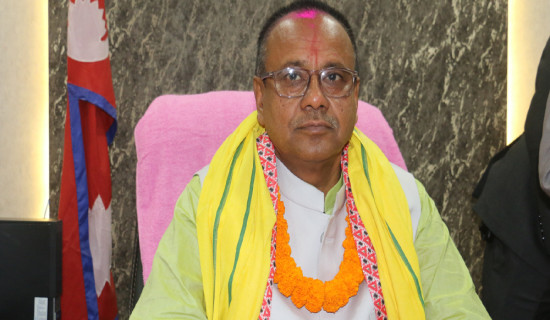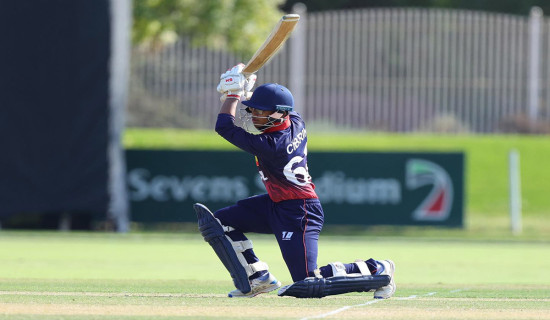- Wednesday, 17 December 2025
NATO Expansion And Consequences
Yuba Nath Lamsal,
The war in Ukraine will leave a deeper mark in the geopolitical landscape of Europe. History is a witness to the fact that invasion in a sovereign country has always been costly no matter how powerful the invading country might be. World history is filled with the rise and fall of empires. The empires that once boasted as invincible did not last forever and were eventually dumped in the trash of history.
Let us go back to recent history. Saddam Hussein of Iraq invaded its small neighbor Kuwait in 1990. The Kuwait invasion brought his downfall. The Soviet Union, which was a superpower of that time, invaded Afghanistan in 1979 which proved costly for Moscow and the Soviet Union disintegrated in 1992 and lost its superpower status.
The United States got into military conflict in Vietnam in 1975 to contain the spread of communism but Washington had to return in humiliation losing more than it gained as the same Vietcong communists against which America fought 20 years came to power after the US withdrawal.
Washington met with a Vietnam-like fiasco in Afghanistan very recently. The United States attacked Afghanistan in 2001 in a furious response to the terrorist strikes in Washington and New York, the responsibility of which was claimed by Al Qaeda.
America entered into the Afghanistan war to wipe out Al Qaeda terrorists and teach the Taliban a lesson for giving shelter for Al Qaeda terrorists. America got badly stuck in the Afghanistan war and it had to come out in utter disgrace even after its military engagement for two decades. America somehow came out of the Afghanistan quagmire but the sole superpower is facing a challenge to maintain its position as the mightiest and richest country.
Fall of hawkish powers
Hawkish powers may apparently emerge winners but ultimately they lose. Only pacifist ones could gain in the long run. Empires like Roman, Byzantine, Mongol, Japanese, British, French, German, Russian, and several others rose and fell.
Hawkish Germany and imperial Japan were badly crushed in World War II. Germany and Japan emerged as economic powers only after they gave up military adventure and embraced the pacific policies.
The newer developments in Ukraine will certainly have repercussions in Europe and more particularly in Europe’s eastern flank and Nordic Region. The security architecture of Europe is likely to take a paradigm shift. Russian adventure in Ukraine has made countries in Europe particularly Eastern Europe and the Nordic Region more susceptible.
Nordic countries like Finland and Sweden are now contemplating joining the North Atlantic Treaty Organization (NATO), the transatlantic defense architecture under US leadership. According to the opinion polls in Finland, 62 percent of Finns want to join the NATO, Swedish public opinion to seems to be inclined toward NATO membership.
If Finland and Sweden join NATO, other European countries may be tempted to become part of the Western security umbrella further isolating Russia. Ukraine has already initiated the process and Georgia, Moldova, and Kosovo may follow suit.
Currently, NATO has 30 members of which 27 are European countries. The United States, Canada, and Turkey are non-European NATO members. Similarly, six other countries namely Finland, Sweden, Ukraine, Georgia, Australia and Jordan have the status of enhanced opportunities partnership for dialogue and cooperation (EOP) of NATO.
Finland maintained its neutral position even during the height of the Cold War, which used to be taken by some countries as a role model. In the aftermath of Russian action in Ukraine, these Nordic countries seem to be shaking off the luxury of neutrality and embracing the European collective defense alliance.
Russia’s action in Chechnya in 2014 led Ukraine and two Nordic countries to become EOPs of NATO. The Ukraine war pushed them further towards the West.
Even if these countries want to join NATO, it may take months to acquire membership due to long membership procedures. The first step requires a country to write to NATO headquarters expressing its intent to become a member.
Then all members need to unanimously decide in the North Atlantic Council, the executive body of NATO and extend an invitation for necessary talks relating to new membership. In the accession talks, the aspirant country has to convince the NATO experts that it meets all the criteria and obligations that NATO requires.
Then the aspirant country has to write a letter to the NATO secretary-general clearly expressing commitment to abide by the obligations of the Alliance.
There are specific criteria to become a NATO member which include: democracy, diversity, a free-market economy, and a military under civilian control. This has to be ratified unanimously by all member countries in the North Atlantic Council. Once it is ratified by all members, the aspirant country is notified about the approval for the new membership. Normally it would take more than a year to complete the procedures.
‘Obsolete’ NATO
However, there are question marks even about the relevance of NATO and its capability to defend Europe. NATO is the relic of the Cold War and some even demand it be disbanded. Former US President Donald Trump called NATO ‘obsolete’ while British politician Jeremy Corbyn, who was once chief of the British Labour Party and leader of the Opposition in parliament, said ‘NATO as a Cold War product should have shut up shop along with the Warsaw Pact’.
French President Emanuel Macron and former German Chancellor Angela Markel floated the idea of creating a separate European Army under the EU. But the creation of EU Army may not be plausible at the moment.
After the Brexit, Europe is a divided house as major powers of Europe are not unanimous on many issues. Given the new scenario and developments, NATO expansion to the Nordic region seems to be likely. But it remains to be seen what consequences and ramifications the newer developments in Europe will have in the future security and geopolitical landscape of Europe and the world.
(The author is a former ambassador and former chief editor of this daily. lamsalyubanath@gmail.com)


